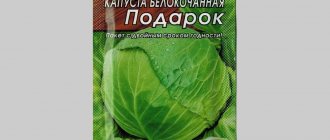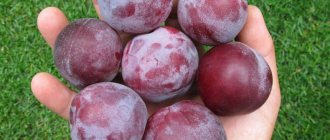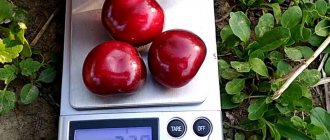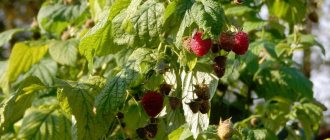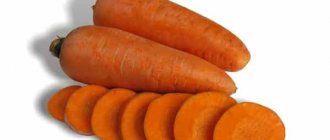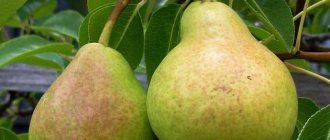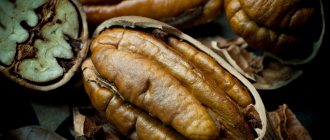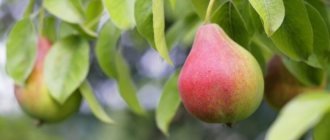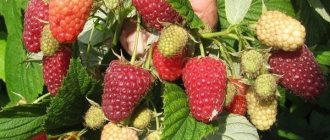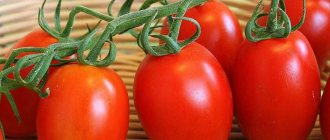The summer pear variety, created by one of the American breeders back in the 19th century, quickly gained wide popularity throughout the world. The culture was named after its creator - Clapp's Favorite. Description of the variety and photos indicate its excellent nutritional qualities.
Tests of the variety carried out in the Soviet Union in the middle of the last century showed it from its best side. Clapp's Favorite pear began to be cultivated in regions such as the Kaliningrad region, the North Caucasus, the western republics of the USSR, the Baltic and Central Asian republics.
Characteristics of the variety
Photos and descriptions of the Klappa's Favorite pear show that the variety belongs to a medium-sized type of fruit tree and is suitable for growing both in personal plots and in large farms. The maximum height of trees of the Lyubimitsa Klappa variety is 4 m. In the first years after planting, the seedlings grow well, forming a pyramidal crown. Subsequently, growth slows down. The tree can bear fruit, on average, for more than 50 years. Among the advantages of the Favoritka Klappa variety are:
- unpretentiousness in terms of soil, but on fertile lands, pears of the Lyubimitsa Klappa variety begin to bear fruit earlier;
- high yield during the life period - depending on the region, the Favoritka Klappa variety gives from 180 to 300 centners per 1 ha;
- excellent winter hardiness - the pear can withstand frosts down to -30 degrees, which allows it to be cultivated in the Moscow region;
- high drought resistance.
Today, more than 20 new varieties have been developed based on the Lyubimitsa Klappa pear. Since the pear is part of the Rose Family, like the quince, it is best to graft it on the quince. It should be noted that there are some disadvantages of the Lyubimitsa Klappa variety, which do not at all reduce its value:
- susceptibility to certain diseases;
- the height of the tree and the spreading nature of the crown, which make caring for it difficult;
- self-sterility of the Favoritka Klappa variety, for pollination of which other varieties, both summer and winter, are used;
- short shelf life of fruits.
As the branches of the beautiful Klappa pear grow, they begin to droop, forming a more rounded crown. An adult tree is characterized by:
- smooth, brown-colored bark on the trunk with slightly noticeable peeling;
- branches of the Lyubimitsa Klappa variety are brown with a slight purple bloom and many lentils - small tubercles that serve for gas exchange;
- the bright green leaves of the pear with thin light petioles have an oval shape that tapers at the end, forming a pointed tip;
- The leaf surface is glossy, without traces of pubescence.
Advantages and disadvantages
The variety is characterized by good winter hardiness and unpretentiousness. Fruiting is regular and abundant, the taste and consumer qualities of the fruit are excellent.
Disadvantages include a short shelf life of the crop (2–3 weeks), as well as a tendency to shed when the fruits are fully ripe, self-sterility and poor resistance to scab.
The variety is often used in breeding work. With the participation of Lyubimitsa Klapp, about 20 new varieties were obtained, of which 5 have already been regionalized.
The summer pear variety Skromnitsa, obtained by crossing the varieties Lyubimitsa Klappa and Kuibyshevskaya golden, is inferior to its parent in frost resistance, although it has the ability to accelerate recovery. But to scab, on the contrary, the Shy One has a higher immunity.
Usolka is another summer variety that Klappa’s Favorite can compete with on its merits. In addition to frost resistance, early fruiting and resistance to scab, Usolka pear fruits can be stored in the refrigerator without loss of taste for 2-3 months.
Description of fruits
When flowering, the Clapp's Favorite pear, as seen in the photo, throws out inflorescences of large snow-white flowers. Thanks to the later flowering dates, they are not afraid of frost. The ovaries are distinguished by an unusual dark red color. They produce large, aromatic fruits, the weight of which in young trees of the Lyubimitsa Klappa variety can reach a quarter of a kilogram each, but as the tree ages, the weight decreases. Among their main characteristics are the following:
- the timing of pear ripening depends on the climatic characteristics of the area - in the southern regions the harvest can be harvested already at the end of July, in the mountains or more northern areas the timing of harvesting the fruits of the Favoritka Klappa variety shifts by a week or two;
- unripe fruits are distinguished by a yellow-green color, which, as they ripen, changes to yellow with a bright red blush on the sides;
- under the thin glossy skin there is juicy, light pulp with a magnificent wine-sweet taste;
- ripe pears of the Lyubimitsa Klappa variety quickly fall off, so it is advisable to pick them slightly unripe;
- the fruits of this variety do not have a long shelf life, they should be immediately eaten or prepared;
- Clapp's Favorite pear gives excellent taste in jams, compotes, and in combination with other fruits and berries - apples, quince, cranberries;
- Dried pear also has excellent taste.
Important! Despite the low shelf life, the fruits of the Favoritka Klappa variety are distinguished by their excellent presentation and high transportability.
Harvest
Pears begin to bear fruit in the seventh year after planting and produce a stable harvest for 60-80 years. From one tree you can collect up to 300 kilograms per season.
Pears intended for long-term storage should be picked slightly unripe. The harvesting procedure is carried out in the first half of the day.
To ensure that the fruit is not damaged during storage, the stalk must be preserved . Place the pears in a clean container. The harvest should be stored in a ventilated, dry place.
It is worth remembering that the shelf life of this type of pear is short. Pear is a summer variety. Damaged fruits cannot be stored.
Planting a pear
When planting seedlings of the Lyubimitsa Klappa variety, you need to take into account some features:
- in the middle zone, pears can be planted at any time - in autumn or spring;
- for the southern regions, autumn planting is preferable, since in the conditions of a warm, long autumn the seedlings will have time to adapt before the onset of frost;
- in northern regions with cold autumn, it is better to choose spring for planting;
- it is recommended to plant 3-4 pears from other varieties as pollinators for the Lyubimitsa Klappa pear;
- when choosing a site for planting, you need to avoid salty or clayey soil types;
- care must also be taken to ensure that there is no rocky layer in the soil, which could damage the root system of the tree;
- groundwater should not rise above 3 m to the surface;
- in shaded areas, the yield of the Clapp's Favorite pear decreases, so the planting site should be well lit - the sugar content in the fruit depends on the intensity of sunlight;
- Icy gusty winds can cause significant damage to a tree.
Selection of seedlings and preparation of holes
It is better to purchase planting material of the Favoritka Klappa variety in a nursery, carefully examining the selected seedlings:
- trees older than 2 years are characterized by poor survival rate;
- Clapp pear seedlings must have a developed root system without any growths, spots, or damage;
- young shoots should be flexible and durable;
- The diameter of the stem should not be less than 1 cm.
Holes for seedlings Clapp’s Favorites are prepared in advance:
- when planting in autumn, they need to be dug up a month in advance, and when planting in spring, it is better to prepare them in the fall;
- the diameter and depth must be at least 0.8 m, and if the seedlings have a branched root system, then the dimensions can be larger;
- at the bottom of the hole, fertile soil is laid out, which is prepared from garden soil mixed with sand, humus, wood ash and fertilizers;
- if there is too much sand in the soil, you need to strengthen it with clay and garden soil so that the pear planting is strong.
Recommendations for planting seedlings
For proper planting of the Lyubimitsa Klappa pear, descriptions, photos and reviews advise:
- place the seedling in the center of the finished hole, on a mound of fertile soil and straighten the roots;
- the root collar should protrude 5 cm above the ground surface; the tree should be turned to the south with the side with fewer branches;
- a garter stake is placed 15-20 cm from the stem;
- evenly cover the tree with pre-prepared fertile soil;
- after that they tie it to a support;
- the soil is compacted;
- at a distance of 0.4 m from the pear trunk, slightly deepen the ground and carry out the first watering of Clapp’s Favorite - 3 buckets of water;
- then the trunk space of the pear should be mulched with humus, straw or manure;
- within several weeks after planting, you need to monitor the likelihood of land subsidence, if necessary, adding soil under the base of the trunk, otherwise the death of the tree is possible.
Often gardeners do not attach much importance to mulching. But mulch performs important functions:
- it retains moisture, protecting the roots from drying out;
- protects them from frost in winter;
- this is an excellent source of nutrients that are distributed evenly to the roots.
Growing
The fruit tree Klapp's Favorite grows and develops intensively under the following conditions:
- The plant prefers moist, light soil; too wet, salty and clayey soils are not suitable for it.
- In areas with close groundwater, it is not recommended to root seedlings.
- It is better to plant trees in the southern, western or southwestern parts of the garden.
- All year round, especially in summer, the tree needs a lot of sun.
- The pear tree does not tolerate icy air flows, drafts and gusts of north wind.
- It is ideal to plant plants in the fall, before frost sets in.
- Seedlings aged 1-2 years with elastic, healthy roots are suitable for planting in open ground.
- Before planting the seedling, humus mixed with sand and fertilizers rich in superphosphates and potassium must be added to the hole.
How to plant Clapp's Favorite?
Pear planting scheme (photo):
A pear seedling is planted in a prepared hole measuring 80x80x80 cm. If the tree has strong roots, the depth may be greater. It is necessary to install the seedling with an offset of 30-35 cm from the center of the hole. Some of the soil is mixed with fertilizer and poured into the bottom of the hole to form a hill.
The tree is placed in it and buried so that the neck protrudes 5 cm above the ground. It is recommended to cover the plant with soil mixed with fertilizer. Immediately after planting, the tree requires abundant watering (20-30 liters of water) and mulching of the tree trunk area with manure.
During the first weeks after planting the pear, you need to ensure that the soil does not sag and add it as necessary. For this variety of pears, subsidence of the ground can lead to drying of the roots and death of the plant.
Further care
As evidenced by reviews from gardeners, the full development and consistently high yields of the Lyubimitsa Klappa pear will depend on competent agricultural technology.
Organization of watering
Watering the Clapp's Favorite pear is done by sprinkling. If there is no possibility for sprinkling, grooves are prepared around the trunk. Watering rate is 2 buckets for each tree; in dry seasons, increase the frequency of watering. After sprinkling, the tree trunk circle is loosened, providing air access to the roots. However, you should not loosen too deeply, so as not to damage the roots of the pear. Then the weeds are removed and mulched with green manure or compost. It is good to plant honey plants such as mustard or buckwheat between the pear trees; you can sow lawn grass. It is recommended to water an adult tree three times per season:
- during the flowering period;
- during fruit development;
- during the ripening period.
Pear pruning
The Klappa's Favorite pear, as recommended by the variety description and reviews, requires timely pruning, otherwise:
- the tree will grow, shading the area and making maintenance difficult;
- productivity will decrease;
- excessive thickening of the crown will create a favorable environment for numerous pests.
Since the tree receives significant stress from pruning, it should be done during periods when the pear is dormant and there is no sap flow. The procedure begins in the second year, simultaneously forming a strong crown, which is especially important when the branches of the Lyubimitsa Klappa variety are fragile. Trimming is carried out according to the following scheme:
- to stimulate new shoots, cut off the top of an annual seedling;
- in the second year, three tiers of shoots are formed, choosing those that are located at an angle of 45 degrees to the trunk;
- the central shoot of the Clapp's Favorite pear needs to be cut at a level of 20 cm from the upper side branch;
- when removing excess branches, you do not need to cut them too deep or leave a stump on the trunk - such cuts are difficult to overgrow;
- Next, shoots growing inside the crown or parallel to the trunk, as well as dry or damaged branches, are pruned;
- All cuts need to be lubricated with garden varnish.
Important! If the fruits on the Clapp pear become smaller, rejuvenating pruning is required.
Feeding
Clapp's Favorite pear is sensitive to fertilizing, but it needs to be done in a timely manner. In the first 4 years, a 5-centimeter layer of mulch in a near-trunk circle with a diameter of up to 1.0-1.2 m is enough for trees. When mulching, the base of the trunk must be left clean so that it does not prop up. In the future, the space for mulching the Clapp pear needs to be gradually expanded, and organic matter needs to be added along with the autumn digging. At the same time, potassium and phosphorus fertilizers are applied in the fall. Nitrogen compounds are useful in early spring before flowering and in summer during the formation of ovaries on the pear.
Pest Control
The description of the pear variety Clapp's Favorite indicates its susceptibility to scab. However, it can also be affected by other diseases, for example, fruit rot or powdery mildew, or fungal pathologies. If signs of disease have already appeared on the leaves of the Clapp pear, you need to remove all diseased parts and burn them. But the best way to combat diseases of fruit trees is preventive spraying. In early spring, you need to treat the pear with Bordeaux mixture and repeat it 2-3 more times during the season. An effective remedy for powdery mildew is a soapy solution of dry mustard. Treating trees with a solution of copper sulfate or colloidal sulfur is useful.
There are many drugs available to control pests. Many gardeners also use glue traps to promptly clear the pear tree trunks of plant debris.
Preparing for winter
To protect the tree in winter from gusty winds and sudden changes in temperature, the description of the pear by Lyubimitsa Klappa advises preparing it for adverse effects:
- the area around the trunk should be cleared of plant debris and weeds;
- water the tree well, then dig up the tree trunk and mulch it with manure, fallen leaves, and straw;
- the trunk must be cleared of dried bark and moss;
- whiten the pear trunk and the bases of the skeletal branches with a solution of copper sulfate with lime and clay;
- young Clapp pear seedlings are well insulated with burlap or other material.
Pests and diseases and protection against them
Table: Pear pests and their control
| Pest name | Signs of defeat | Control measures |
| Pear sucker | The insect damages the inflorescences and buds, covering them and shoots with sweet secretions, on which a sooty fungus then settles. |
|
| Pear sawfly | Only the ovaries are damaged with complete destruction of the seed chambers. Damaged ovaries turn black right on the tree and fall off. If you break it, a yellow-white larva is visible. |
|
| Red fruit mite | Swellings of light green, then red, dark brown, and finally black appear on the leaves. If the damage is severe, the leaves dry out and fall off. Young fruits become ugly and often fall off. | Spray during bud break with Keltan (0.2% emulsion). If necessary, repeat after flowering and then after harvesting. |
Pear pests in the photo
Clapp's favorite is especially affected by the copperhead in dry conditions. The sawfly attacks the flowers.
Red mite infestations are difficult to treat
Table: Pear diseases and treatment methods
| Name of the disease | Manifestation of the disease | Control measures |
| Scab | On shoots, leaves, and fruits, dark olive or gray spots appear, respectively. Affected fruits crack, grow slower, and sometimes fall off. |
|
| milky shine | The fungus attacks leaves and shoots, giving them a silvery-white or grayish color. When heavily infested, it penetrates into the wood of the trunk, causing the tree to dry out. |
|
| Fruit rot | A small brown spot appears on the affected fruit, which quickly grows with the appearance of light gray spore pads. The pulp of the fruit first becomes loose and then hard. The pear becomes black-blue and shiny (mummified). |
|
Pear diseases in the photo
One of the main disadvantages of Clapp's Favorite is its susceptibility to scab.
Milky sheen is a dangerous fungal disease that can lead to the death of a tree. Fruit rot spreads especially quickly in damp conditions.
Reviews
Valentina Khorokhorina, 57 years old, Ivanovo
Two pears of the Favoritka Klappa variety have been growing on our plot for many years. Their fruits are distinguished by their excellent taste and indescribable aroma. Every year we make wonderful jam from Clapp pear with quince and treat it to all our neighbors and friends. The variety is wonderful.
Dudin Valery, 64 years old, Voronezh
I have long been familiar with the Klappa’s Favorite pear and its characteristics, since I grow this variety in my garden. The tree does not require complex care, consistently produces high yields, the fruits are sweet, and the tender pulp simply melts in your mouth. Nearby I planted three trees of the Forest Beauty variety for pollination. I harvest 10 days before full ripening, since then the pears will begin to fall off. If you know the characteristics of the Klappa Favorite variety, then growing it is not difficult.
Stepanova Victoria, 58 years old, Kalmykia
No other variety has such a delicate honey taste, and the rich harvest allows you to make a variety of preparations for the winter. Clapp's Favorite pear is not at all capricious, you just need to water and feed it on time. I am very pleased with the variety and recommend it to everyone.
Krotov Victor, Melnikovo
Several years ago, on the recommendation of friends, I planted the Klappa’s Favorite pear tree on the plot. The description, photos and reviews were confirmed this year, when the young trees produced their first harvest. The fruits are large, ruddy and aromatic, the taste is delicious. The whole family is delighted. I am very pleased with this purchase.
Description of Clapp's Favorite pear
The history of this summer pear variety began in 1860 in Massachusetts (USA), when the famous breeder T. Clapp conducted experiments with the Forest Beauty variety. However, there is another version of the origin of the modern plant: some gardeners believe that the ancestor of the pear could have been the Williams variety, and hybridization with other varietal variations occurred spontaneously. Today, based on the Lyubimitsa Klappa pear, Russian breeders have developed many other varieties, some of which have already been zoned throughout the country. As for the mother plant, it is recommended for planting in the Kaliningrad region and the North Caucasus region, although in practice it is grown in all regions of the Russian Federation.
Did you know? Dried and crushed pear leaves are an excellent alternative to tobacco; they can also be used to make cigarettes. They were popular among Europeans centuries ago, before tobacco was introduced there from South America .
Clapp's Favorite pear trees are medium-sized plants (up to 5 meters in height), with a round or wide pyramidal crown and dense skeletal shoots. Many branches appear drooping as they grow in a downward direction. The oval leaf blades are a rich dark green color, with a slight whitish coating at the bottom of the leaf. All of them are quite dense, with finely serrated or solid edges. During the flowering period (usually begins in May), large white flowers appear on the branches, arranged in inflorescences of 5–7 pieces. Soon they are replaced by short pear-shaped fruits, slightly widened towards the top, 160–230 g each. Moreover, most of them are formed on young trees.
The color of pears is rich yellow, with a slight burgundy tint in places exposed to the sun. Under the dense, slightly bumpy skin lies white and very juicy sweet flesh, with a slight sour aftertaste. A characteristic difference of the variety is the presence of warty formations with a slight roughness on the surface (near the top they take the form of small spots). Under standard conditions, the harvest of ripe pears occurs at the end of July or beginning of August, but in order to set the fruits, pollinating varieties will have to be planted in advance, since the “favorite” Klappa pear is a self-sterile variety.
Did you know? In Chinese culture, the pear ("li") has long been considered a symbol of immortality, and the expression "fen li" still has two meanings: to share the pear or to separate. This is why the Chinese prefer not to share the fruit, considering it a bad omen.
